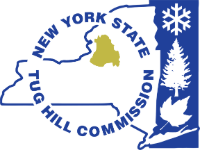Background
With the outbreak of the COVID-19 pandemic, the issues with broadband on Tug Hill were elevated. Areas of greatest concern are households, especially low-income households, with kindergarten through 12th grade children attending school virtually; households of persons with telehealth needs; and households with people teleworking. Recognizing this need in Tug Hill communities, a partnership was created to address broadband issues in a nine-county region, including Cortland, Cayuga, Onondaga, Oswego, Oneida, Herkimer, Jefferson, Lewis, and Saint Lawrence counties.
For a general overview of broadband expansion efforts nationally and in states across the nation, the commission recommends reading this article by the Rockefeller Institute: With Billions for Broadband Incoming, How Have State and Local Governments Expanded High-Speed Internet Access? | Rockefeller Institute of Government (rockinst.org).
Useful Links
- BroadbandUSA National Telecommunications & Information Administration
- NTIA Interactive Indicators of Broadband Need Map to visualize the digital divide across the country
- NYS ConnectALL Initiative
- AdkAction’s Broadband-for-All website
- Home – National Digital Inclusion Alliance to learn more about home broadband access, public broadband access, personal devices, and local technology training and support programs.
- WNY Digital Inclusion & Equity Coalition – Digital equity for all Western New Yorkers (wnydigitalequity.org) to see how community-based organizations, business, government, school districts, higher education, philanthropy, and unaffiliated community members are promoting digital inclusion and digital equity for Western New Yorkers.
- Federal Communications Commission’s Emergency Broadband Benefit Program and Outreach Kit
- Older Adults Technology Services
- Affordable Housing Developers’ Broadband Handbook January, 2022 Rural LISC
- New York State Comptroller Thomas DiNapoli’s September 2021 report, titled Availability, Access and Affordability: Understanding Broadband Challenges in New York State
- With Billions for Broadband Incoming, How Have State and Local Governments Expanded High-Speed Internet Access? | Rockefeller Institute of Government (rockinst.org)
- New York Upstate Cellular Coverage Task Force: Final Report
Educational Videos (Tug Hill Commission YouTube Channel)
The Tug Hill Commission partners, have been working to identify solutions for improving broadband throughout the region and beyond. A series of three webinars in May and June 2021 provided the chance for local government leaders, agency partners, and Tug Hill residents to learn more about how investments in broadband infrastructure can be made over the next several years to improve access. You can re-watch those webinars below or see them on our YouTube playlist Broadband 2021 Webinar Series.
Broadband Map (2021)
The Tug Hill Commission worked closely with several counties, including Oneida and Oswego counties, and regional partners, including Mohawk Valley Economic Development District and the CNY Regional Planning and Development Board, to identify infrastructure gaps based on addresses without access to broadband infrastructure, or “unserved” addresses. New York State defines unserved addresses as any location which has no fixed wireless service or wired service with speeds of 25 Mbps download or less available. By identifying these infrastructure gaps and the number of addresses unserved within those gaps, counties and regional organizations can begin identifying high-need areas for broadband expansion. The regional broadband map (at the bottom of the broadband page) includes these broadband infrastructure gaps as well as 2010 census data and 2015 American Community Survey data for population, number of children under 18 years old, median household income, and other important indicators for affordability and equity.
This information can be used to begin the next step in the broadband expansion process, which is developing technical solutions with the support of both public and private entities. In coordination with one another, counties, regional organizations, internet service providers, and others can identify potential areas for expansion and the cost associated with build out and operations of new broadband infrastructure. Once solutions have been discussed thoroughly, a business plan can be created and used to apply for grants. Internet service providers, in many cases, become the owners of the proposed new broadband infrastructure, e.g., “assets.”
Note: Last updated 11/2021.
